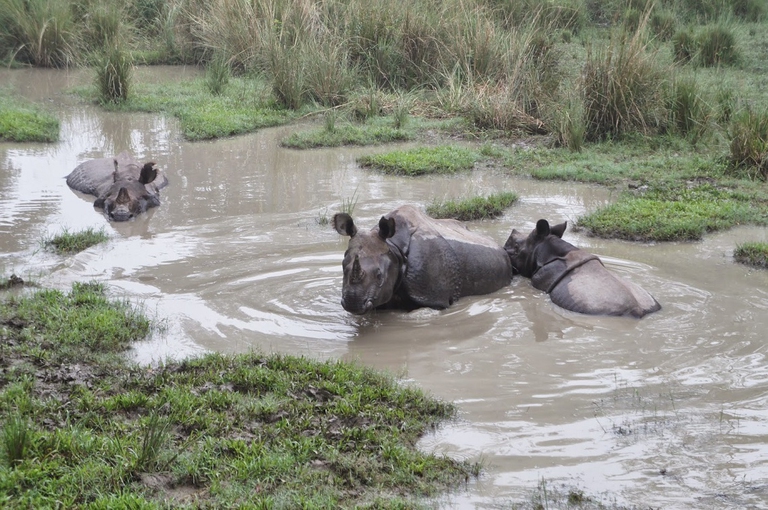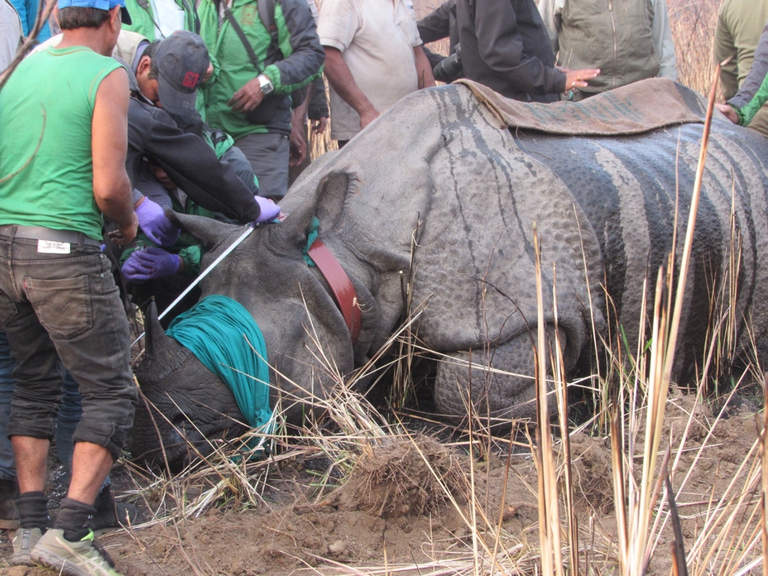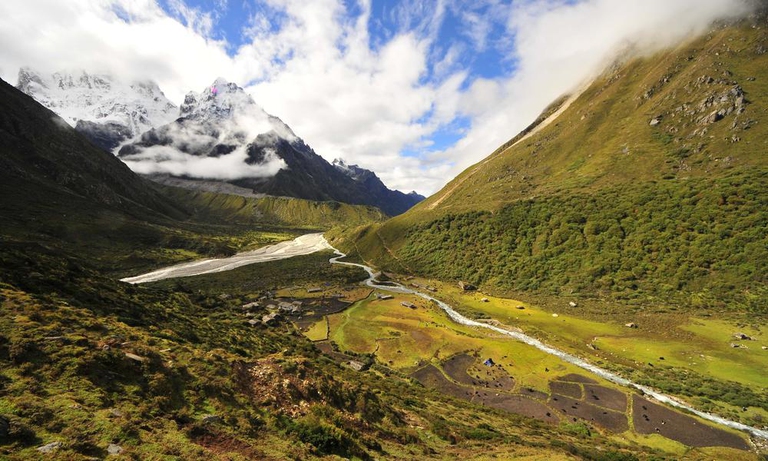
Our species took its first steps in a world covered in trees. Today, forests offer us sustenance, shelter, and clean the air that we breathe.
Over 730 days have passed since the last rhino was killed in Nepal. Let’s discover the secrets of the country that set an example for the whole world.
The five species of rhino that survive in Africa and Asia – descendants of the over 30 rhino species roaming the Earth more than 60 million years ago – are critically endangered and could become extinct in less than 30 years. These ancient creatures are mostly threatened by poaching and are killed for their horns, whose price has skyrocketed in the black market. While Africa is finding new and extreme solutions to protecting these animals, there’s an island of happiness where rhinos are already safe: Nepal.
In the last two years no rhinos (Rhinoceros unicornis) have been killed by poachers in the small Himalayan country; the last killing dates back to the 2nd of May 2014. The mountainous nation located between China and India has achieved the incredible goal of “zero poaching”. And this is the first time Nepal has reached this objective for two consecutive years, which has led to an increase in the rhino population to 645 individuals, the highest recorded number in the country so far. Let’s discover how Nepal succeeded in achieving this extraordinary goal, compared to many countries that failed.
“This exceptional success is based on a combination of high-level political will, and the active involvement of the park authorities, Nepal Army, Nepal Police, conservation partners and local communities,” Krishna P. Acharya, Ministry of Forests and Soil Conservation spokesperson explains.
Cross-national wildlife crimes have been curbed thanks to institutions as well as local communities, which managed about a third of the country’s forests thus reducing poverty and protecting biodiversity. Local empowerment and involvement in the protection of natural resources was a fundamental aspect of tackling poaching. In addition, more than 50 per cent of the income generated by national parks is invested in community development activities, including the construction of schools and infrastructure that indirectly contributes to preserving wildlife.
Nepal’s measures to protect wildlife have been implemented in national parks as well as in neighbouring areas with traditional methods that use new approaches. For example, SMaRT, the Spatial Monitoring and Reporting Tool that monitors wildlife, collects and manages data and plans activities.
The successful measures to protect wildlife in Nepal are based on six key pillars: assessment, capacity, community, cooperation, prosecution and technology. Protected area authorities can now access the Zero Poaching toolkit, which contains the best available anti-poaching tools.
“Nepal was a great role model in zero poaching, with its success we can only hope that we will see a ripple effect in the rest of Asia”, said Nepal’s Minister of Forest and Soil Conservation Sharad Chandra Paudel. Now the only thing to do is follow the path traced by this small country nestled in the mountains.
Siamo anche su WhatsApp. Segui il canale ufficiale LifeGate per restare aggiornata, aggiornato sulle ultime notizie e sulle nostre attività.
![]()
Quest'opera è distribuita con Licenza Creative Commons Attribuzione - Non commerciale - Non opere derivate 4.0 Internazionale.
Our species took its first steps in a world covered in trees. Today, forests offer us sustenance, shelter, and clean the air that we breathe.
Poachers in Africa are encroaching on wildlife land and killing rhinos in travel hot spots now devoid of visitors due to the coronavirus pandemic.
Actor and environmental activist Leonardo DiCaprio has contributed two million dollars to a fund to protect Virunga National Park in Congo from threats such as terrorism, the coronavirus and poaching.
For the first time in seventeen years, Iceland’s two main whaling companies won’t resume whale hunting. The announcement concerns this year’s season but could carry into the future.
The relationship between the coronavirus and wildlife is complex: while the pandemic may lead to a reduction in the illegal trade in wild animals, it may also encourage it in other respects.
The largest coral reef in the world is severely threatened by climate change, but researchers are developing strategies that could contribute to saving the Great Barrier Reef.
NGO Free the Bears has opened a mountain sanctuary for moon bears in Laos. With the government’s help, it aims to close all bile farms by 2022.
Seychelles have extended its marine protected area, which now covers over 400,000 square kilometres, an area larger than Germany.
The tapir was reintroduced into Brazil’s Atlantic Forest, the country’s most at-risk ecosystem. The species can play a key role in the forest’s recovery.










